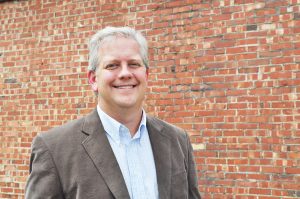I came to realize the importance of trust back when I was doing local economic development work.
Occasionally, the economic development efforts that I helped lead were met with skepticism. Like most community leaders, I was heckled by the occasional, “What? You want to bring that business to our town?”
Luckily, I received some great advice from my friend Jim Beddow: “When two people have a problem, the problem often isn’t the real problem,” he said. “The problem is the state of their relationship.”
Nice.
But how do we build relationships—especially among people who are not our close friends? And how do we build the trust in those relationships so that we can make things happen?
First, create opportunities for conversation. Sociologists Robert Putnam and Ray Oldenburg bemoaned the loss of trust (i.e., social capital) among community residents and blamed the loss of “institutions” where people hold informal conversations. The logic goes that if people don’t bowl together in bowling leagues, if people don’t come together for conversations after church or bump into each other on Main Street, then people won’t get to know each other. And when people don’t know each other, it’s difficult for them to trust one another.
There are lots of ways to create these opportunities for conversation, the most obvious of which is go up to someone you don’t know and start a conversation. Simple. On the other end of the spectrum, you could host a community engagement meeting that brings together the entire community for a conversation about something important. Very productive (when done well), but also very time-consuming.
I’ve employed an in-between option with a board that I have helped chair for the last year. It’s a regional board, and we only meet four times a year. To help people get to know each other in a meaningful way, I’ve started each meeting by asking a question that causes people to share something about both themselves and the organization.
My guess is that some board members think it’s hokey or that it wastes time. But if we can improve our relationships and increase trust, it will pay dividends in the end.
Second, listen with curiosity and wonder. I learned the phrase in some facilitation training that I have gone through. The idea is that curiosity and judgment can’t exist in our minds at the same time. It’s true. And while curiosity may have killed the cat, nothing kills a conversation more than judgment.
Listening with curiosity and wonder starts by not rushing to offer answers and arguments. Just listen and try to ask, “I wonder why this person feels that way?”
I recently read an article by Benjamin Mathes, who set up a “Free Listening” station at the Republican National Convention. One of the people who came up to his station was a lady who wanted to talk about her belief that abortion is murder.
Listening to her talk was difficult for Mathes, who held opposing views. But instead of jumping in with his opinions, he let her finish before asking a powerful question. “Thank you for sharing that. (What is) your story? I’d love to know how you came to this point of view.”
After sidestepping the personal nature of the question, she finally relented.
“My whole life, I knew I was meant to have children. Then, when I was 18—18!—the doctor told me I’d never have children. My ovaries were damaged, or missing … it doesn’t matter which. I kept it a secret, and when my husband found out, he left me. I’m alone, my body doesn’t work, I’m old … who will ever love me?” (urbanconfessional.org/blog/howtodisagree)
The situation of this woman’s life had shaped her views on this controversial topic. To understand her and the strength of her convictions on this issue, one must hear her story.
People empathize when a person shares this type of a story. Empathy and trust go hand in hand.
Finally, share stories about yourself. The above example shows the power of building trust by asking someone to tell you their story. But why wait for someone to ask you to share your story? Look for your own opportunities.
Too often, leaders are afraid of sharing their stories and letting people get to know them. But as storytelling expert Annette Simmons writes, when people don’t know you very well, they formulate their own story about you as a defense mechanism. It’s easier for them not to trust you.
Personal stories that reveal our humanity, however, become the antidote. When we reveal our humanity, people see us for who we are, and they begin to trust us.
One way to tell a story that accomplishes this goal is to tell your “who am I” story—your story about why you do the work that you do, or why you volunteer to serve on a board or committee. Or maybe it’s a time when something didn’t go right for you, and you learned a lesson. Obviously, not all situations are appropriate for these stories. But if you look, you’ll find the right time. People will see you for who you are, and they will trust you a little bit more.
Yes, relationships matter
Building trust isn’t guaranteed by using the three ideas I shared above. They will help, but you still have to prove that you are trustworthy by doing the “right thing.”
And if there’s only one lesson that you take from this article, it’s this: Relationships matter, and we have to invest time and energy into building trust with those with whom we work. It’s a lesson I wish our national leaders would learn.

Mike Knutson
Through his business, MAK(e) Strategies, Mike Knutson of Watertown, S.D., is a community coach and facilitator. Among his many activities, Mike currently serves as a community coach in Home Address, a Dakota Resources program designed to build community capacity for strategic housing development, now and in the future.
 Dakotafire Get your spark here.
Dakotafire Get your spark here.



